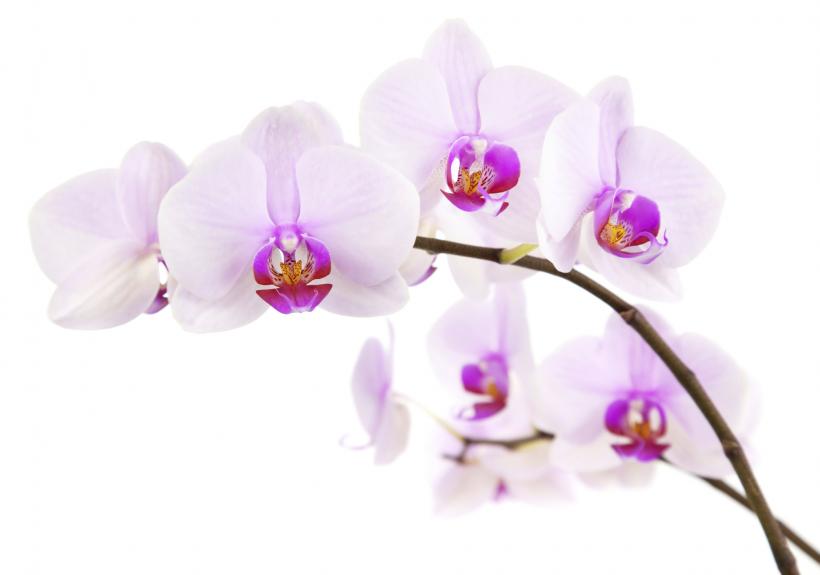
Thinkstock
Among flower devotees, orchids have long been a choice option for ornate, elegant and exotic display—made all the easier by their ready availability in Home Depots, Targets, Trader Joe's and plant nurseries a-plenty. But in early-Victorian England, there was nary an orchid to be found among the estates of the rich and famous, or in décor of state affairs. Most of the general public were largely unaware the species even existed. But when in 1818 a naturalist sent the first orchid to the foggy climate of London, the specimen wasn’t greeted with simple intrigue; following English tradition in going crazy for a novel commodity from a foreign locale, absolute orchid madness swept the nation.
What ensued was a quickly-erected industry for the flowers, comprised of rich collectors, merchant traders, exotic destinations and even a wild bunch of orchid hunters who competed against each other in addition to treacherous terrain, wary local populations and animals with tropical disease throughout the Americas and Asia to extract the precious—and much-coveted—flora.
The Addiction
A gaggle of wealthy businessmen saw dollar signs all over the initial orchid, and promptly entered the orchid game to collect new and rare specimens, which were then mainly sold at auction to rich customers desperate to get their hands on the flowery trend—come hell or high-water.
One of the largest collectors was Frederick Sander, the so-called “Orchid King,” an unscrupulous trader who at the height of his career employed 23 (often grumbling) orchid hunters across the world to contribute to his empire of greenhouses in England, Belgium and New Jersey. His company incubated between one and two million of the flowers in the last two decades of the 1800s.
The most exotic orchid breeds fetched thousands of dollars each, and trading among collectors had the effect of pushing prices even higher (in one such puzzling example, a collector initially paid $12 for an orchid, and then sold it back to the supplier five years later for $1,000. Now that’s an inefficient market).
Arduous Transport
Though the orchid market was highly lucrative, just getting the flowers to Europe was a difficult and risky business. From base camps alongside the precious orchid prey, hunters had to dry and pack the flowers, then cart them (by themselves, or with the aid of horses, llamas or even elephants depending on the location) over sometimes vast expanses of land to the coast.
Next came the long ocean trip to England, after which surviving plants would produce new flowers for collectors and their antsy clientele. Sadly though, many didn’t last the ardors of the trip. As one reporter recounted, “Ten thousand plants may be collected on some remote Andean peak or Papuan jungle with infinite care, and consigned to Europe, the freight alone amounting to thousands of dollars, yet on arrival there may not be a single orchid left alive.”
The Hard-knock Lives of Orchid Hunters
When they weren’t preparing and hauling orchids for transport, the hunters were often doing their darnedest to foil each other at the behest of their rival collector-benefactors. They stalked each other’s movements, destroyed each other’s collections, tried to poach one another’s indigenous assistants and sometimes even came to direct physical confrontation (one of Sander’s hunters once pulled a gun on a rival and nearly engaged in a shootout on the ship the two were on).
Collecting these flowers was no joke. All the more so since beyond making each other’s lives miserable, many hunters died in pursuit of the precious orchids. During an interview in 1906, Sander tossed out the names of numerous hunters who “met more or less tragic deaths through wild beasts, savages, fever, drowning, fall or other accidents.”
Effect on Local Supplies
The hunters weren’t the only ones to take it on the chin during the orchid craze. The insatiable demand for the flowers and unsustainable methods of their collection devastated many native orchid populations.
To this day, there are areas in Central and South America where the plants never rebounded—meaning, in an ultimate irony, that locals would have to travel to a place like England to see the indigenous orchids that are no longer a part of their landscape. Recognizing this potential fate, many countries with orchids created laws to stop harmful harvest of orchids for foreign markets.
End of Orchid Mania
While Western collectors accrued foreign orchids in droves without the knowledge or ability to efficiently reproduce the flowers, by the 1920s botanists had figured out how to harness mighty seed technology. With this development, orchid mania finally subsided as the plants became plentiful (and affordable!) in Europe and the U.S. Because what self-respecting aristocrat wants vegetation that the masses can attain? Thus ended the age of the orchid hunters, and the barrage of orchid-rape in other countries.
And while this colorful—and sordid—history of orchids in the West has largely fallen out of knowledge, you’ll have the satisfaction of knowing the elite past of this plant when you next gaze upon it while grabbing milk and eggs at the grocery store.






